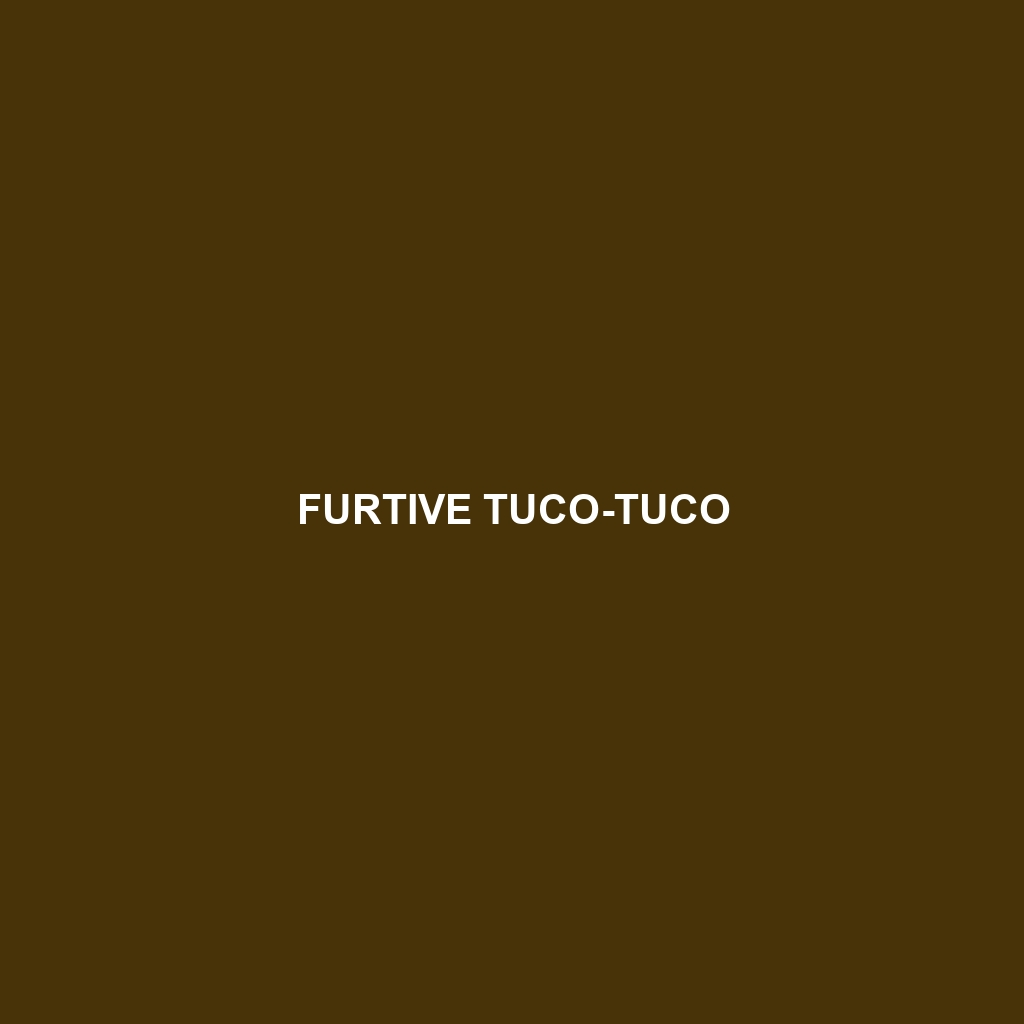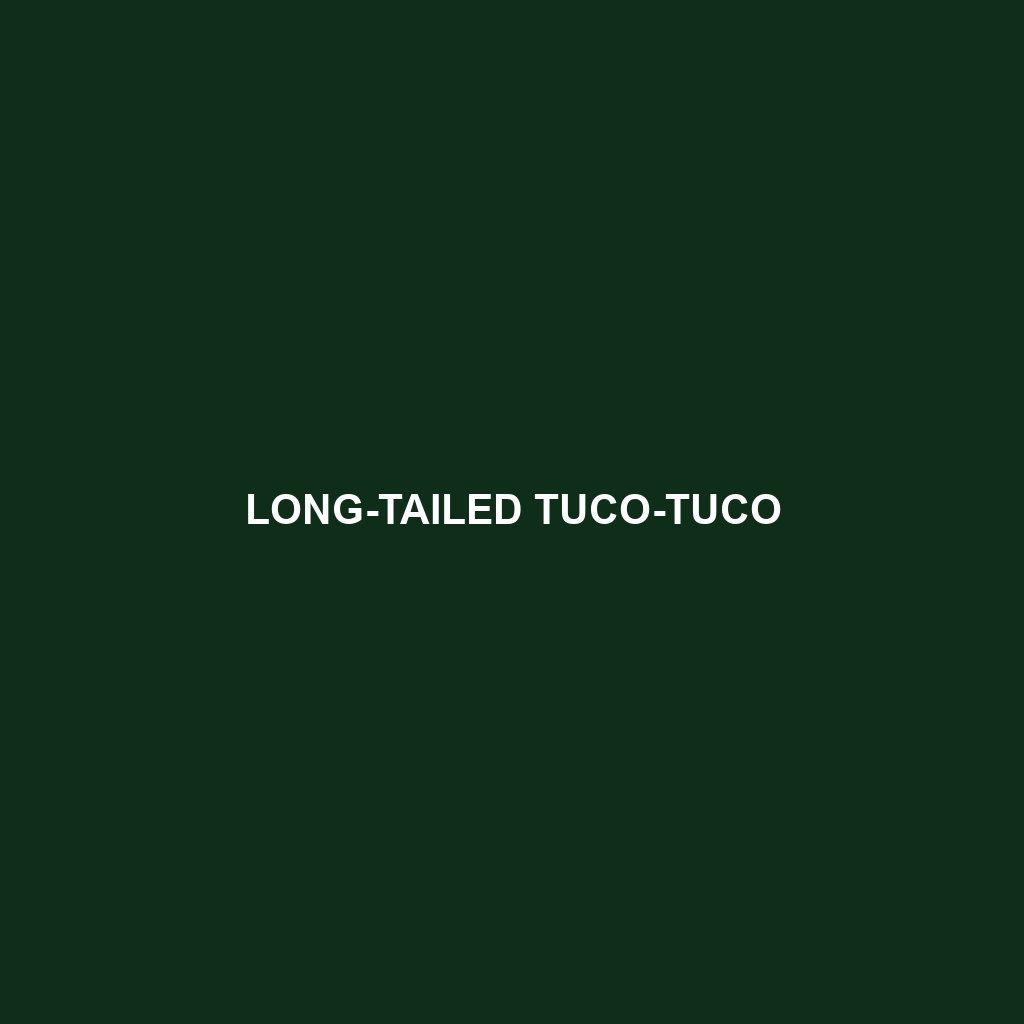Discover the elusive Furtive Tuco-tuco (*Ctenomys furtivus*), a nocturnal burrowing rodent native to the grasslands of Argentina. With its distinctive sandy brown fur and exceptional digging abilities, this medium-sized species plays a crucial role in its ecosystem by aerating soil and supporting plant growth. Unfortunately, habitat loss has made it vulnerable, underscoring the importance of conservation efforts to protect this unique creature and its environment.
Tag: ecosystem role
Lessa’s Tuco-tuco
Discover the fascinating world of Lessa's Tuco-tuco (<i>Ctenomys lessees</i>), a medium-sized rodent native to central Argentina's sandy grasslands. This solitary, burrowing species plays a crucial role in its ecosystem by aerating soil and dispersing seeds, while facing challenges due to habitat loss. Learn about its unique adaptations, diet, and conservation status in our comprehensive overview.
Lewis’s Tuco-tuco
Discover the intriguing world of Lewis's Tuco-tuco (<i>Ctenomys lewisi</i>), a medium-sized rodent native to the arid grasslands of Argentina. Known for their unique burrowing behavior and distinctive physical traits, these vulnerable creatures play a crucial role in their ecosystem, aiding in soil aeration and serving as vital prey for local predators. Learn more about their habitat, diet, and conservation status in this captivating blog post.
Ibicui Tuco-tuco
Discover the fascinating world of the Ibicui Tuco-tuco, a burrowing rodent native to the grasslands of southern Brazil. Learn about its unique adaptations, diet, and critical role in soil aeration and ecosystem balance, while also exploring the conservation challenges it faces due to habitat loss. Delve into this intriguing species and uncover its importance to biodiversity in its native environment.
San Juan Tuco-tuco
Discover the intriguing world of the San Juan Tuco-tuco, a medium-sized rodent native to Argentina's mountainous regions. Learn about its unique adaptations, social behavior, and vital role in the ecosystem as a burrower and seed disperser, alongside conservation challenges facing this vulnerable species.
Lami Tuco-tuco
Discover the intriguing world of the **Lami Tuco-tuco** (*Guanaco tuco-tuco*), a vulnerable rodent native to the temperate grasslands of Argentina and Uruguay. With its remarkable burrowing behavior, robust physique, and vital ecological role in seed dispersal and soil aeration, this solitary creature showcases a fascinating adaptation to its habitat. Learn more about its diet, reproductive habits, and the conservation challenges it faces in this insightful blog post.
Long-tailed Tuco-tuco
Discover the intriguing world of the **Long-tailed Tuco-tuco** (<i>Ctenomys talarum</i>), a burrowing rodent native to the grasslands of Argentina. Renowned for its distinctive long tail and extensive tunneling habits, this herbivorous species plays a crucial role in maintaining soil health and plant diversity within its ecosystem. Learn about its habitat, diet, and fascinating behaviors that contribute to the rich biodiversity of the region.
Henia-Camiare Tuco-tuco
Discover the fascinating world of the Henia-Camiare Tuco-tuco, a unique burrowing rodent native to South America's grasslands. With its characteristic tawny fur and nocturnal lifestyle, this species plays a vital role in soil aeration and ecosystem balance, while facing challenges from habitat loss. Explore its behavioral traits, diet, and conservation status in our latest blog post!
Black-backed Tuco-tuco
Discover the intriguing world of the Black-backed Tuco-tuco, a fascinating rodent native to the grasslands of Argentina. With their remarkable burrowing skills and unique social behaviors, these vulnerable creatures play a critical role in their ecosystem by aerating soil and supporting plant growth. Learn about their diet, reproduction, and the conservation efforts needed to protect their habitats.
Emilio’s Tuco-tuco
Discover the fascinating Emilio's Tuco-tuco, a vulnerable rodent native to Argentina's grasslands. With its unique burrowing behavior, distinctive vocalizations, and crucial role in soil aeration, this solitary herbivore inhabits a delicate ecosystem facing threats from habitat loss. Learn about its physical traits, diet, and the urgent need for conservation efforts to protect this remarkable species.








